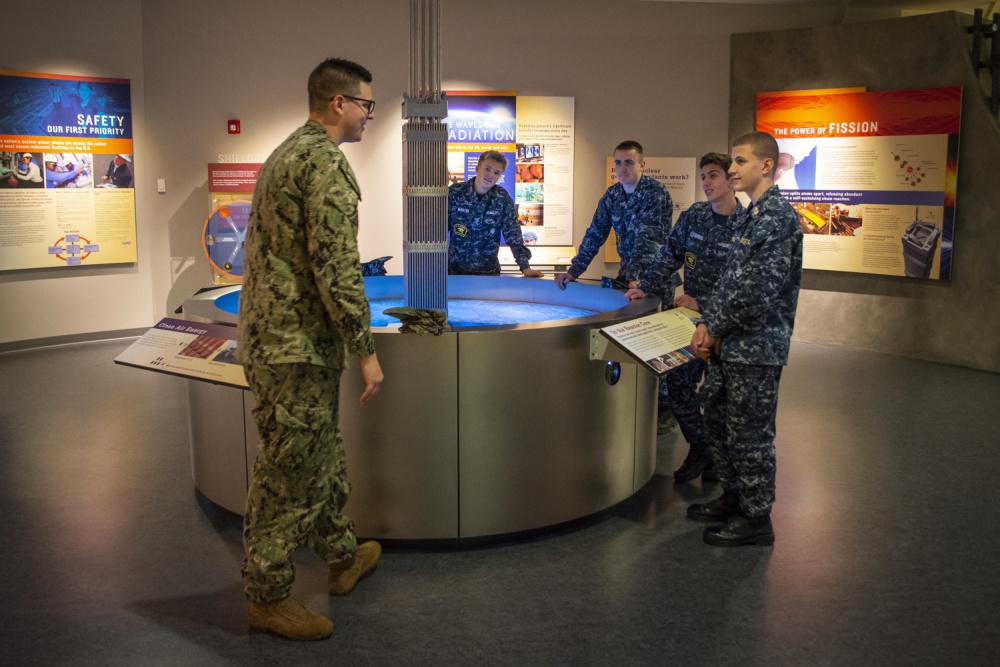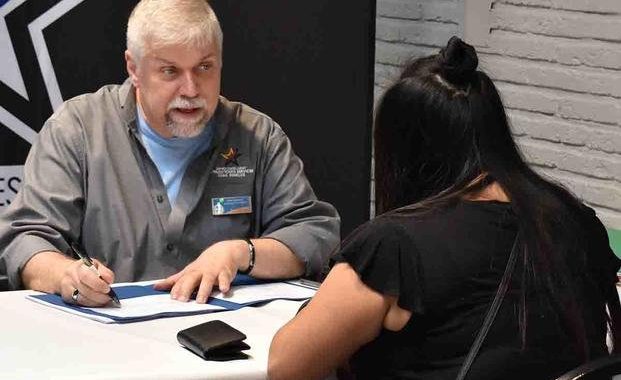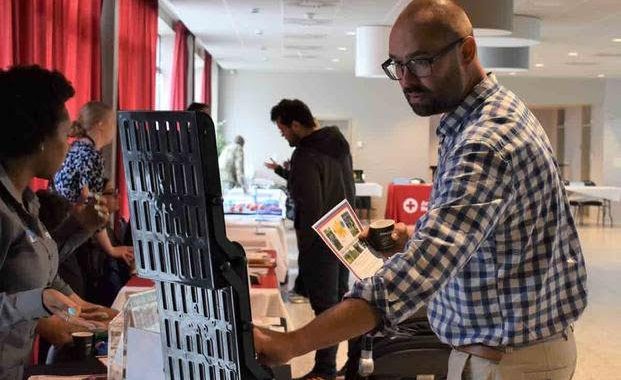Nuclear Career Day: Introducing Navy’s future Leaders to the Nuclear Power Field
5 min read
PHILADELPHIA, PA, UNITED STATES
Story by Petty Officer 1st Class Diana Quinlan
Navy Recruiting District Philadelphia
SALEM, N.J. — The Navy’s nuclear power field is one of the most prestigious in the fleet, but it can be intimidating for young men and women to join with little knowledge of what a nuclear career entails. This is where recruiters of Navy Recruiting District Philadelphia and staff of Public Service Enterprise Group (PSEG) Nuclear Power Plant came in. Partnering together to bring educational awareness and to help build future relationships with the newly acquired talent, the team held its second iteration of Nuclear Career Day and Delayed Entry Program (DEP) meeting at the PSEG Energy and Environmental Resource Center in Salem, N.J.
During this career day, future Sailors in DEP and U.S. Naval Sea Cadets of John T. Dempster Division had a hands-on experience in the control room simulator, toured the maintenance and electrical shops, were familiarized with nuclear operations, and held a Q&A session with both civilian and Navy experts in the field.
“To start our career day, we first introduced some of our leadership, and had the leadership tell a little about their story, where they started and how many of them started by enlisting into armed forces,” said David Burgin, manager of emergency preparedness off-site and response programs, PSEG Nuclear Power. “Following the meet-and-greet, we wanted to paint a comprehensive picture by taking Sailors and sea cadets to the site, so they can actually see the careers that they could possibly go into while in the Navy and after the Navy.”
According to Burgin, showcasing the power plant, machinery, facilities, and providing a hands-on experience in the control room, as well as security operations, helps future Sailors receive a comprehensive look on what their future jobs may entail. It also helps them formulate any questions about nuclear careers for local experts and veterans, as well as nuclear coordinators currently serving in the Navy.
“We have been working closely with PSEG for a couple of years now, and their hands-on experience in the nuclear field has been very beneficial to us as we have a lot of applicants interested in nuclear field program,” said Cmdr. Kemi Elebute, commanding officer of Navy Recruiting District Philadelphia. “The applicants get to actually visit a fully functional, active nuclear facility. They get to see, touch, talk to operators, so they get a better feel what the nuclear field is all about, which they can use in their decision making.”
Elebute added that building strong, mutually-beneficial relationships, such as the one with PSEG Nuclear Power, helps recruiting districts maintain the mission of acquiring new talent for the nuclear field through education and familiarization.
Today’s Navy is continuously growing, with more than 290 ships and approximately 337,000 Sailors serving on active duty. With technological growth and innovation, manning the Navy’s ships and submarines with qualified talent in the nuclear field remains a top priority and recruiters strive to acquire new talent into the service as a “nuke” (a term often used to describe any job in the Navy that has specifications in the nuclear field) to continuously build and improve the future, power-efficient Navy.
Enlisted nuclear jobs include electronic technicians (ET), electrician’s mates (EM) and machinist’s mates (MM). Sailors with these qualifications and ratings are employed onboard nuclear powered ships to maintain the control subsystems, the machinery and the piping in nuclear reactors. Some nuclear MMs receive additional specialization in health, physics and maintaining reactor chemistry.
For naval officers, there are four specialized nuclear career paths, which include submarine officer, surface warfare officer, naval reactors engineer and naval nuclear power school instructor.
The PSEG is not only helping future Sailors understand nuclear operations and applications, bridging the educational gap before they go into the field, but also showcases future opportunities after the naval service. A strong proponent of hiring veterans, PSEG staff looks highly upon veterans’ work ethic, discipline, dedication, and more importantly their education and experience acquired over their years of service. According to Burgin, part of the plant’s workforce is an organization called PSEG Vets. Encompassing all branches of military service, veterans fill many positions at the plant, from operators to maintainers and engineers.
“At our nuclear power plant we really like the connection [with service members], and we enjoy bringing Sailors onboard as part of our staff upon completion of their service. So what we are trying to do for young [future] Sailors who are coming into the Navy is to show them what they can potentially do in the Navy’s nuclear field, and how they can transfer that knowledge and experience after their service,” said Burgin. “We think that it is something that we need to do because it really helps young folks determine what their future is going to be. It is a great connection for us, and we really, really enjoy the honor of doing it.”
One of the future Sailors attending the career day was Connor Shousky, from Philadelphia, Pennsylvania, who is joining the Navy’s nuclear field as nuclear technician.
“I’m learning a lot about more intricate processes as well as day-to-day operations that nuclear engineers, operators and technicians do in the civilian world just as much as in the military,” said Shousky. “My expectations of the Navy is to be challenged to the fullest, and to push my capabilities. I look forward to daily challenges as I join this field.”
Following the tour of the facilities, Shousky was also among the future Sailors who had the honor of participating in the oath of enlistment ceremony at the plant, with Cmdr. Elebute serving as the enlisting officer.
“I think it was great, I learned so much and I really enjoyed myself,” said Shousky about his experience at the PSEG Nuclear Facilities. “I look forward to learning more and working in nuclear career in the Navy.”
NRD Philadelphia encompasses regions of Pennsylvania, New Jersey, Delaware and Maryland, providing recruiting services from more than 30 recruiting stations with the overall goal of attracting the highest quality candidates to ensure the ongoing success of America’s Navy.
Located on a 740-acre site on Artificial Island, PSEG Nuclear comprises the second largest commercial nuclear power facility in the United States, generating enough power for approximately three million homes each day. PSEG Nuclear is dedicated to energy efficiency improvements, renewable energy development, vehicle electrification and clean power generation.





